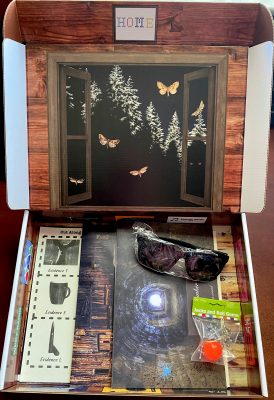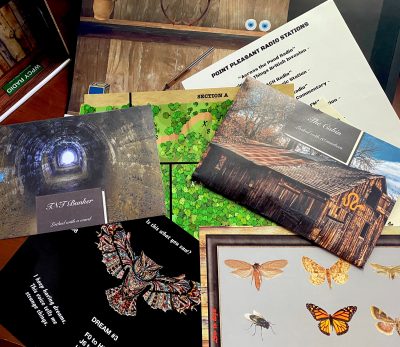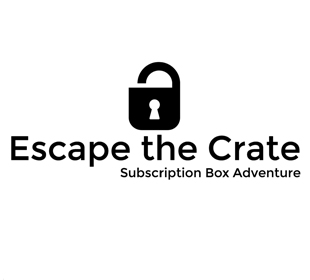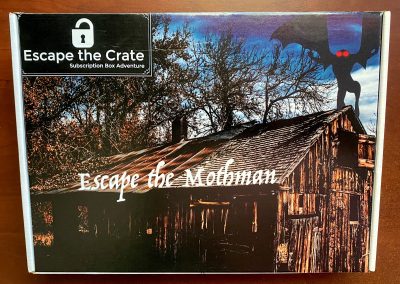RATING: 3 Keys RESULT: Win REMAINING: +36:25
Uban legends. Men in black suits. Strange radio transmissions. A mysterious winged creature with glowing red eyes who happens to be the harbinger of disasters. Who said West Virginia wouldn’t make for a great vacation spot?!


 At first glance, the quiet town of Point Pleasant, West Virginia seems like the least likely place in the world for something sinister to happen. However, in 1966-1967 the small town was rocked by the appearance of a mysterious creature…one known as the Mothman. With large wings, glowing red eyes, and the aura of danger hovering around it, the creature roamed the woods and the skies. We are sending you back to 1967 to investigate claims of a Mothman sighting where your name was brought up by the creature. An abandoned cabin holds the secrets you need, where the radio crackles with incomprehensible codes and strange men in black suits stalk the streets waiting for your arrival. You only have an hour to explore the cabin, piece together the evidence, and escape before you end up disappearing into the night.
At first glance, the quiet town of Point Pleasant, West Virginia seems like the least likely place in the world for something sinister to happen. However, in 1966-1967 the small town was rocked by the appearance of a mysterious creature…one known as the Mothman. With large wings, glowing red eyes, and the aura of danger hovering around it, the creature roamed the woods and the skies. We are sending you back to 1967 to investigate claims of a Mothman sighting where your name was brought up by the creature. An abandoned cabin holds the secrets you need, where the radio crackles with incomprehensible codes and strange men in black suits stalk the streets waiting for your arrival. You only have an hour to explore the cabin, piece together the evidence, and escape before you end up disappearing into the night.
Escape the Crate has built a brand around crafting stories which are historically accurate, and oftentimes based on real events. For their 17th adventure, they took a different route – kind of. Although heavily based in urban legends, there are allegedly many recorded instances of Mothman sightings around Point Pleasant, West Virginia. The TNT military installation was real. Even Chief Cornstalk, leader of the tribe of native Americans who supposedly placed a curse on the land actually existed.
Players in any Escape the Crate adventure take on the consistent role of agents working for EMIT – the Emergency Mediation In Time. Their sole purpose is to solve mysteries in order to set the timeline straight.
Story has long been a focus for Escape the Crate as a brand, and without a doubt, it is the strongest aspect of Escape the Mothman. Even in instances where a puzzle or two becomes frustrating, the Mothman legend is presented in such a compelling manager that we were eager to proceed with our investigation, just to learn what might happen next. It’s sometimes difficult to tell a flowing narrative in escape game format – perhaps even moreso in an at home game setting; Escape the Mothman’s storyworld kept us interested and engaged from start to finish.

 As we’ve touched on previously, being a home game, we define “Scenic,” from a graphic design perspective, as well as the quality, weight and feel of print materials inside the box.
As we’ve touched on previously, being a home game, we define “Scenic,” from a graphic design perspective, as well as the quality, weight and feel of print materials inside the box.
Escape the Crate has come a long way since its early boxes. What was once a simple brown shipping container full of plain sheets of (actually) hand-written notes has evolved into a more polished product. The outside of the shipping box itself is fully finished to create a sense of excitement before even cracking open the lid. The mysterious silhouette of the Mothman lurks in the shadows, above Escape the Crate’s branding logo. The sides of the box are “wrapped in newspapers” from Point Pleasant, West Virginia, hyping just some of the conspiracy theories surrounding the creature.
The inside of the box is even more graphic designed, making use of high gloss finishes to add a professional flare. Many of the items hidden within will prove useful to EMIT agents during their quest for answers.
As with most home games, the various “rooms” time travelers access are comprised mostly of sealed envelopes. Each one hides additional clues, and some even hide other “rooms” or “locked objects” in the form of smaller nesting envelopes. Print textures vary by item, with some being simple paper to others that are more high gloss post card weight. Escape the Crate also makes use of a small handful of physical objects to further both the mood and the investigation.
EMIT agents must answer all of their findings onto a password-protected page of Escape the Crate’s official online website. Unlike many other home games, Escape the Crate has no companion app of any sort – meaning internet access is required to progress through this adventure. Despite its digital integration, we were disappointed to see the Escape the Mothman section of the site has no distinguishing theme or graphics to differentiate it from the main Escape the Crate home page. As well, this website has no themed background music, sound effects, ambiance, or official game time. (The instructions suggest you use your phone’s stopwatch.) Unique to the Escape the Crate brand, agents have the option of personally reading through sometimes lengthy story documents, or pressing play online to have a pre-recorded version of the identical content recited to them. For those who are not a fan of reading in games, this is a great feature to have; we just wish they made use of in-character, professional voice actors to help increase the immersion factor.

 Escape the Mothman starts with a completely story-driven tutorial puzzle of sorts – requiring time travelers to pick up their rental car for a drive back to Point Pleasant after being dropped off in 1967. This approach allows agents to quickly familiarize themselves with Escape the Crate’s mechanics without the need of immersion-breaking instructions.
Escape the Mothman starts with a completely story-driven tutorial puzzle of sorts – requiring time travelers to pick up their rental car for a drive back to Point Pleasant after being dropped off in 1967. This approach allows agents to quickly familiarize themselves with Escape the Crate’s mechanics without the need of immersion-breaking instructions.
Our route to the town quickly became a bit frustrating thanks to a map-based puzzle that at times seemed confusing for the sake of being confusing. It might be beneficial to ease into such tasks, to allow new EMIT agents to adjust to the logic style that lies ahead.
A big part of Escape the Mothman is tuning in to multiple radio broadcasts to learn more about the conspiracy theories surrounding the creature. In doing so, agents may be lucky enough to catch the voice of the actual Mothman himself on tape – distorted amid the static. This clue delivery method proves to be one of the highlights of the Escape the Mothman mission, drawing agents deep within its storyworld in a way that feels organic. At times, the Mothman’s messages are pretty straightforward; in others, they’ll require much more decoding, which only adds to the flavor of many tin foil hat theories that surround him.
Other puzzles would prove much more frustrating, and at times verged on a bit illogical. Each often starts in an intuitive way, with the notion of “I know what they want me to do here!” The problem in these cases is that it’s almost never what they actually want you to do. One task with an ID card was particularly upsetting. Others, involving various physical interactions with the crate’s objects, while entirely logical, feel as though they don’t pan out to the fullest extent they could – often resulting not in how agents have impacted their integration, but rather simple “count the quantities.”
The investigation does manage to tie those loose strings together in the end, offering a puzzle-based finale that’s both story-driven, active and fun – sending agents back to their own timelines on a high note.

Each Escape the Crate mission has the option of being played at varying degrees of difficulty. As is typically the case with our at home game reviews, we opted to play at a 60 minute time limit to be consistent with most brick and mortar rooms we feature. In this case, “expert” level is a 60 minute time limit, with agents receiving 75 minutes for “regular” difficulty and 90 minutes for “easy.” A fourth option, “just for fun,” invites time travelers to complete challenges with no time limit at all.
Escape the Mothman is a notable evolution from earlier Escape the Crate products, and for that, we’re certainly grateful. It’s a highly story-driven adventure through a unique theme, offering a chance to learn some historical-based facts, local legends, and classic spooky myths all while playing a game from home. If one were only allowed a single reason to travel back in time with Escape the Crate, it would unquestionably be for its narrative-driven storyworlds.
Although there were moments of frustration, including a handful of logic leaps throughout the investigation, Escape the Mothman still has a lot of positive aspects that help come together for a mostly enjoyable experience. Great strides have been made to improve the outward appearance of the product. A few others, including themed pages on the website, professional voice actors, and background music tracks could go a long way to add that final piece to the proverbial puzzle of at-home immersion.
Escape the Crate released four free online bonus puzzles to act as a sort of prequel for Escape the Mothman. Each plays through quickly, but remains enjoyable and more importantly, stays true to the conspiracy theory storyworld established for this game. Solving all four will allow agents to tackle one additional grand finale bonus puzzle after playing through the crate itself.
It’s no myth or legend that Escape the Crate continues to grow, with new titles released in a bi-monthly fashion. Each mission ends with a cliff-hanger tease designed to build excitement for the next edition. Escape the Crate may be purchased as either a subscription service, or select retired missions (including Escape the Mothman) may be purchased individually at any time.
*Montu, Escape Authority’s VP, Dog Business™ and lead home game correspondent endorses the opinions found within this review.
Show your support for Escape Authority and get social with us:

Venue: Escape the Crate
Location: At Home Game
Number of Games: 20 (1 in this box.)
GAME SPECIFIC INFORMATION:
Duration: flexible durations determined by the player (We opted to set our clock to the traditional 60 minutes.)
Capacity: 1-6 people
Group Type: Private / You will not be paired with strangers (but if you are, call 911 immediately to report a home invasion.)
Cost (at Publish Time): $29.99 bi-monthly subscription / $39.99 per game for specific retired titles (This particular crate is currently sold out but will be restocked in July 2020)

We thank Escape the Crate for inviting us to play this game. Although a complimentary copy was generously provided, that in no way impacts the opinion included within this review.



















